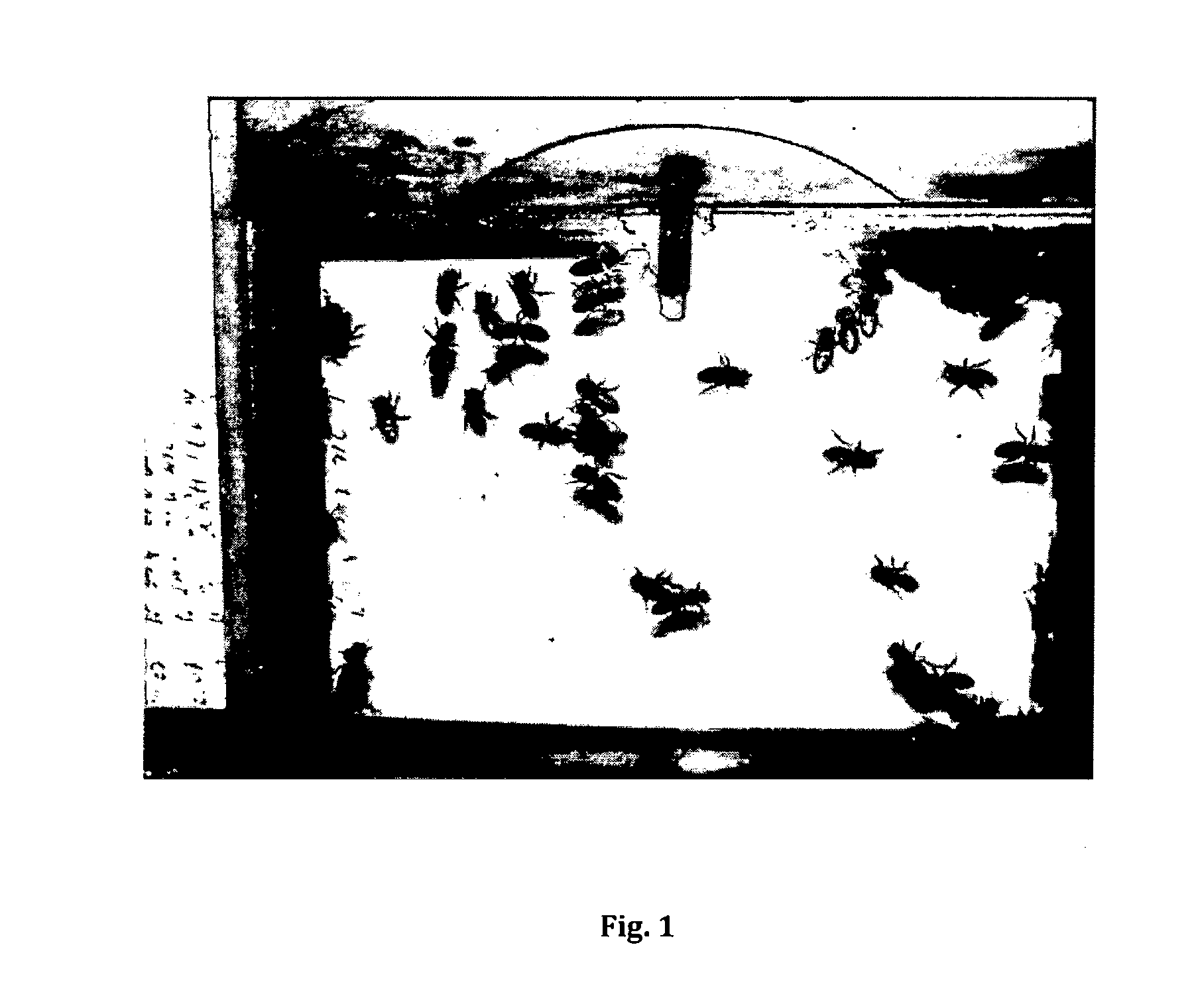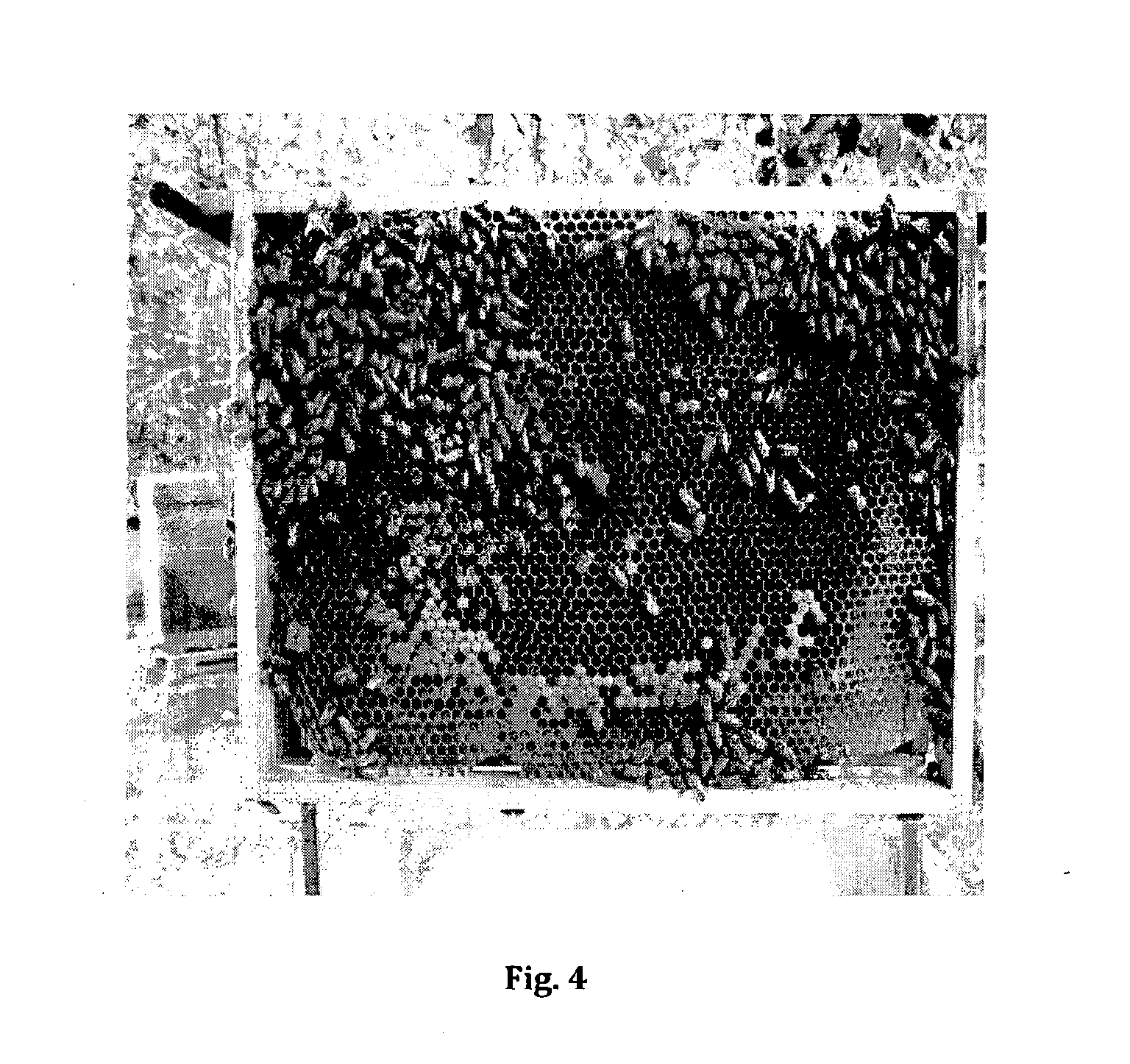Prenylated chalcone formulation for the treatment of bees
a technology of bees and prenylated chalcone, which is applied in the field of formulation preventing insect collapse, can solve the problems of severe, drastic decrease in honey production, and the collapse disorder of colonies occurring in the post-productive period, and achieve the effect of increasing the vigour of insects and preventing the collapse of colonies
- Summary
- Abstract
- Description
- Claims
- Application Information
AI Technical Summary
Benefits of technology
Problems solved by technology
Method used
Image
Examples
example 2
A Study of the Influence of Xanthohumol in Syrup on the Viability of Bees with the Use of Low Concentration of Imidaclopride in Apiary
[0109]Similar studies as described in example 1 were carried out in three bee hives containing ˜40,000 bees. Frames with bees (FIG. 4) were sprayed with imidaclopride dissolved in water at a concentration of 125 μl / l (microlitres per litre). It is a half of imidaclopride concentration in Kohinor 200 SL used in cultivation of vegetables in soil. The purpose of the study was to investigate low doses of imidaclopride to which mainly are exposed the bees collecting nectar during agrotechnological procedures.
[0110]The bees were studied in two groups. The bees in control hives did not receive protection in the form of xanthohumol formulation before spraying with imidaclopride (FIGS. 5A, 5B and 5C). The studied group were bees which were given protective xanthohumol preparation in 10 mg / ml (milligram per litre) syrup for one week and then treated with imidac...
example 3
[0113]A study of the influence of different concentrations of xanthohumol on the viability of bees with the use of poisonous biocide thiamethoxam (thiamethoxam 25%) (Aktara)
[0114]The experiment was carried out in Loma-Zawady Przedmieście, Poland in an apiary consisting of 25 colonies based in hives of Dadant type (frame 435×300 mm). The hives had wire-net, detachable bottom in the form of a diagnostic tray. The nest body of the hives consisted of 10 frames.
[0115]Bee colonies in the form of separated colonies were purchased from local producer. Each separated colony consisted of 3 frames of brood and frames with supply of bee bread and honey. All frames were settled in “black” by bees.
[0116]The experiments were carried out on 25 swarms of bees divided into VI groups. Groups I to V, consisted of 4 hives, each.
[0117]Group I-V
[0118]In groups I-V, xanthohumol at the concentration of 40 mg / l was used as a protective formulation. Actara at the concentration of 0.4 g / l was used for poisonin...
PUM
| Property | Measurement | Unit |
|---|---|---|
| Fraction | aaaaa | aaaaa |
| Fraction | aaaaa | aaaaa |
| Fraction | aaaaa | aaaaa |
Abstract
Description
Claims
Application Information
 Login to View More
Login to View More - R&D
- Intellectual Property
- Life Sciences
- Materials
- Tech Scout
- Unparalleled Data Quality
- Higher Quality Content
- 60% Fewer Hallucinations
Browse by: Latest US Patents, China's latest patents, Technical Efficacy Thesaurus, Application Domain, Technology Topic, Popular Technical Reports.
© 2025 PatSnap. All rights reserved.Legal|Privacy policy|Modern Slavery Act Transparency Statement|Sitemap|About US| Contact US: help@patsnap.com



